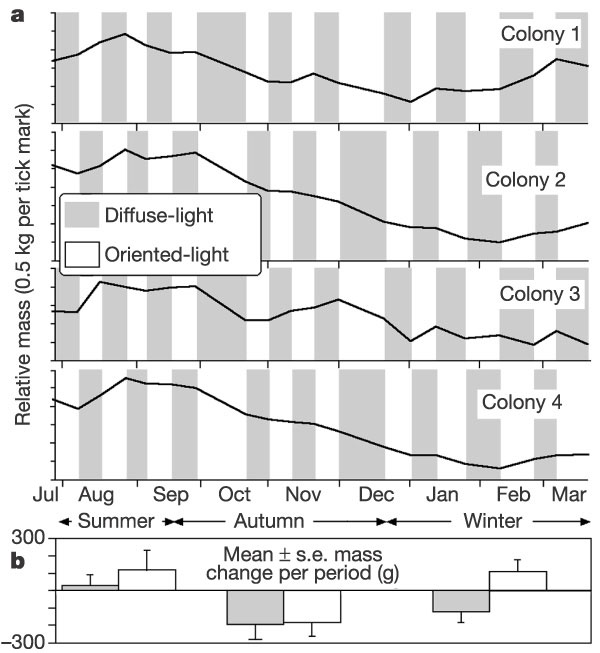Dance Bee Dance
Biology 342 Fall 06 A. Mahan
| Home | Phylogeny | Ontogeny | Mechanism | Adaptive Value | References | Course Home |
Adaptive Value
Dancing increases the amount of food available to the entire hive
Hives that are
able to communicate information about food sources by
dancing are able to exploit more food resources and in turn are overall
healthier,
more robust colonies.
Experiments done by Sherman and Visscher in 2002 used hives outfitted with no suitable vertical surfaces for dancing, so bees were forced to perform dances on horizontal surfaces. Without a vertical surface, bees were unable to use gravity to communicate direction in relation to the sun, see the mechanism page, so they required a directional light source to orient themselves. The investigators exposed these hives to either diffuse light, in which the animals could not orient themselves, or oriented-light, in which the bees were able to communicate direction. During the course of a year, the weight of the entire hive was recorded and investigators observed that the mass of the hive decreased when bees were unable to accurately communicate information about the location of food sources as shown below (a) (Image: Sherman Figure 2).
Experiments done by Sherman and Visscher in 2002 used hives outfitted with no suitable vertical surfaces for dancing, so bees were forced to perform dances on horizontal surfaces. Without a vertical surface, bees were unable to use gravity to communicate direction in relation to the sun, see the mechanism page, so they required a directional light source to orient themselves. The investigators exposed these hives to either diffuse light, in which the animals could not orient themselves, or oriented-light, in which the bees were able to communicate direction. During the course of a year, the weight of the entire hive was recorded and investigators observed that the mass of the hive decreased when bees were unable to accurately communicate information about the location of food sources as shown below (a) (Image: Sherman Figure 2).
When the investigators calculated the change in hive mass (b) during the winter months, they found that the ability to communicate about food sources was significantly more important than during the summer or autumn months. This suggests that the bees rely on communication during times of food scarcity to maintain a healthy colony size (Sherman 2002).
